+Search query
-Structure paper
| Title | Structural basis of human NOX5 activation. |
|---|---|
| Journal, issue, pages | Nat Commun, Vol. 15, Issue 1, Page 3994, Year 2024 |
| Publish date | May 11, 2024 |
 Authors Authors | Chenxi Cui / Meiqin Jiang / Nikhil Jain / Sourav Das / Yu-Hua Lo / Ali A Kermani / Tanadet Pipatpolkai / Ji Sun /   |
| PubMed Abstract | NADPH oxidase 5 (NOX5) catalyzes the production of superoxide free radicals and regulates physiological processes from sperm motility to cardiac rhythm. Overexpression of NOX5 leads to cancers, ...NADPH oxidase 5 (NOX5) catalyzes the production of superoxide free radicals and regulates physiological processes from sperm motility to cardiac rhythm. Overexpression of NOX5 leads to cancers, diabetes, and cardiovascular diseases. NOX5 is activated by intracellular calcium signaling, but the underlying molecular mechanism of which - in particular, how calcium triggers electron transfer from NADPH to FAD - is still unclear. Here we capture motions of full-length human NOX5 upon calcium binding using single-particle cryogenic electron microscopy (cryo-EM). By combining biochemistry, mutagenesis analyses, and molecular dynamics (MD) simulations, we decode the molecular basis of NOX5 activation and electron transfer. We find that calcium binding to the EF-hand domain increases NADPH dynamics, permitting electron transfer between NADPH and FAD and superoxide production. Our structural findings also uncover a zinc-binding motif that is important for NOX5 stability and enzymatic activity, revealing modulation mechanisms of reactive oxygen species (ROS) production. |
 External links External links |  Nat Commun / Nat Commun /  PubMed:38734761 / PubMed:38734761 /  PubMed Central PubMed Central |
| Methods | EM (single particle) |
| Resolution | 3.2 - 4.06 Å |
| Structure data | EMDB-42013, PDB-8u7y: EMDB-42014, PDB-8u85: EMDB-42015, PDB-8u86: EMDB-42016, PDB-8u87: |
| Chemicals | 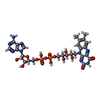 ChemComp-FAD: 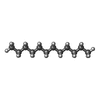 ChemComp-D12: 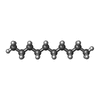 ChemComp-D10: 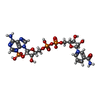 ChemComp-NAP:  ChemComp-HEB:  ChemComp-ZN: 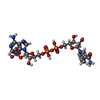 ChemComp-NDP:  ChemComp-PX2: |
| Source |
|
 Keywords Keywords | MEMBRANE PROTEIN / enzyme / oxidase / activation mechanism |
 Movie
Movie Controller
Controller Structure viewers
Structure viewers About Yorodumi Papers
About Yorodumi Papers











 homo sapiens (human)
homo sapiens (human)